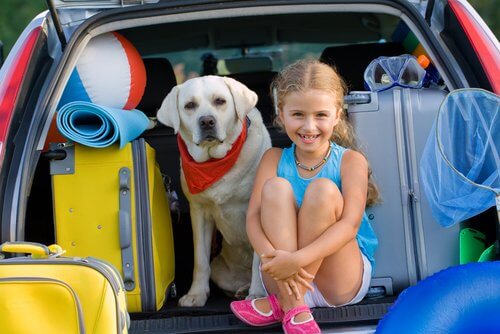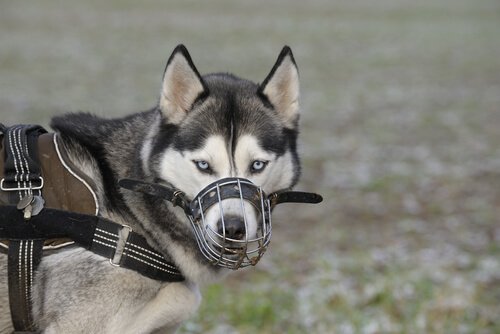5 Tips for Taking Your Pet on a Plane

If you’re taking your pet on a plane with you, make sure you’re aware of all the different regulations and requirements. You want to ensure that this experience is stress-free and free of any issues, both for you and your pet. We’ll give you some tips to help out.
A few things to keep in mind if you’re taking your pet on a plane
To avoid any unpleasant and last-minute surprises, you should keep a few things in mind when it comes to bringing a pet on a plane. Here are some of the most important ones.
1. Look up the rules

Whether you’re flying domestically or internationally, there are certain rules you must follow to travel with your pet. For example:
- Necessary documentation (identification, vaccines, medical certificate, etc.)
- Other countries’ regulations for allowing animals to enter
- Transportation options (cabin, under the plane, what types of cages are allowed)
- Knowing which tickets you’ll have to purchase (keep in mind that there’s a quota per flight for pets)
If you’re taking your pet on a plane, you’ll want to avoid any last minute surprises: make sure you know all of the requirements, have any necessary documentation and buy your ticket in advance. And, above all, keep calm so you don’t stress out your pet.
2. Talk to your veterinarian
Ask your veterinarian for advice on the best way to plan your trip with your pet. The professional should give your pet a check-up first to ensure that he’s in a good condition to fly, health-wise or age-wise. Ask him if it would be possible to give your pet some type of tranquilizer.
3. Get your pet used to the cage that he’ll be traveling in
You can’t just put your pet in the cage for the first time on the day of the trip. He has to be able to get used to it gradually, and you should use treats and toys to help him. That way, his cage won’t be an issue and it will be one less thing to worry about the day of your trip.
You don’t want to put any more stress on the animal; remember, he’s already going to be in a strange and noisy area when you get to the airport, and he’ll be afraid when the plane is taking off.
4. Don’t feed him before boarding the plane
Ideally, you should have your pet fast for 6 to 8 hours before boarding the flight. This will reduce the possibility of him vomiting. However, he needs to stay hydrated. Also, make sure he has done his business before the trip. Additionally, taking him for a good walk before the flight may help him calm down a bit.
5. Try to stay calm
If you get anxious when flying, or you’re worried about how your dog will handle the trip, he’ll definitely be able to sense that you’re nervous. Then, he’ll also start to get nervous. So, calm down. That way, you’ll both be able to face the situation better.
Useful information for taking your pet on a plane
This information may also be useful if you have to fly with your pet:

- Service dogs can travel in the cabin with their owners without weight or size restrictions.
- The cage that your dog will be traveling in has specific size limits. It must have a suitable door, provide proper air circulation and the floor should be able to absorb liquids. Also, make sure you properly label it.
- Notify the plane staff that you’re traveling with a pet.
- Try to take a nonstop flight.
- Don’t leave his leash in the cage because it may cause an accident.
And, don’t worry, the hold of the aircraft is also pressurized. So, calm down and, if possible, enjoy your flight.
Once you’ve landed, take your pet for a walk so he can do his business and stretch his legs in a safe place. Make sure you congratulate him and give him a treat so that he knows he behaved well.
If you’re taking your pet on a plane with you, make sure you’re aware of all the different regulations and requirements. You want to ensure that this experience is stress-free and free of any issues, both for you and your pet. We’ll give you some tips to help out.
A few things to keep in mind if you’re taking your pet on a plane
To avoid any unpleasant and last-minute surprises, you should keep a few things in mind when it comes to bringing a pet on a plane. Here are some of the most important ones.
1. Look up the rules

Whether you’re flying domestically or internationally, there are certain rules you must follow to travel with your pet. For example:
- Necessary documentation (identification, vaccines, medical certificate, etc.)
- Other countries’ regulations for allowing animals to enter
- Transportation options (cabin, under the plane, what types of cages are allowed)
- Knowing which tickets you’ll have to purchase (keep in mind that there’s a quota per flight for pets)
If you’re taking your pet on a plane, you’ll want to avoid any last minute surprises: make sure you know all of the requirements, have any necessary documentation and buy your ticket in advance. And, above all, keep calm so you don’t stress out your pet.
2. Talk to your veterinarian
Ask your veterinarian for advice on the best way to plan your trip with your pet. The professional should give your pet a check-up first to ensure that he’s in a good condition to fly, health-wise or age-wise. Ask him if it would be possible to give your pet some type of tranquilizer.
3. Get your pet used to the cage that he’ll be traveling in
You can’t just put your pet in the cage for the first time on the day of the trip. He has to be able to get used to it gradually, and you should use treats and toys to help him. That way, his cage won’t be an issue and it will be one less thing to worry about the day of your trip.
You don’t want to put any more stress on the animal; remember, he’s already going to be in a strange and noisy area when you get to the airport, and he’ll be afraid when the plane is taking off.
4. Don’t feed him before boarding the plane
Ideally, you should have your pet fast for 6 to 8 hours before boarding the flight. This will reduce the possibility of him vomiting. However, he needs to stay hydrated. Also, make sure he has done his business before the trip. Additionally, taking him for a good walk before the flight may help him calm down a bit.
5. Try to stay calm
If you get anxious when flying, or you’re worried about how your dog will handle the trip, he’ll definitely be able to sense that you’re nervous. Then, he’ll also start to get nervous. So, calm down. That way, you’ll both be able to face the situation better.
Useful information for taking your pet on a plane
This information may also be useful if you have to fly with your pet:

- Service dogs can travel in the cabin with their owners without weight or size restrictions.
- The cage that your dog will be traveling in has specific size limits. It must have a suitable door, provide proper air circulation and the floor should be able to absorb liquids. Also, make sure you properly label it.
- Notify the plane staff that you’re traveling with a pet.
- Try to take a nonstop flight.
- Don’t leave his leash in the cage because it may cause an accident.
And, don’t worry, the hold of the aircraft is also pressurized. So, calm down and, if possible, enjoy your flight.
Once you’ve landed, take your pet for a walk so he can do his business and stretch his legs in a safe place. Make sure you congratulate him and give him a treat so that he knows he behaved well.
This text is provided for informational purposes only and does not replace consultation with a professional. If in doubt, consult your specialist.








